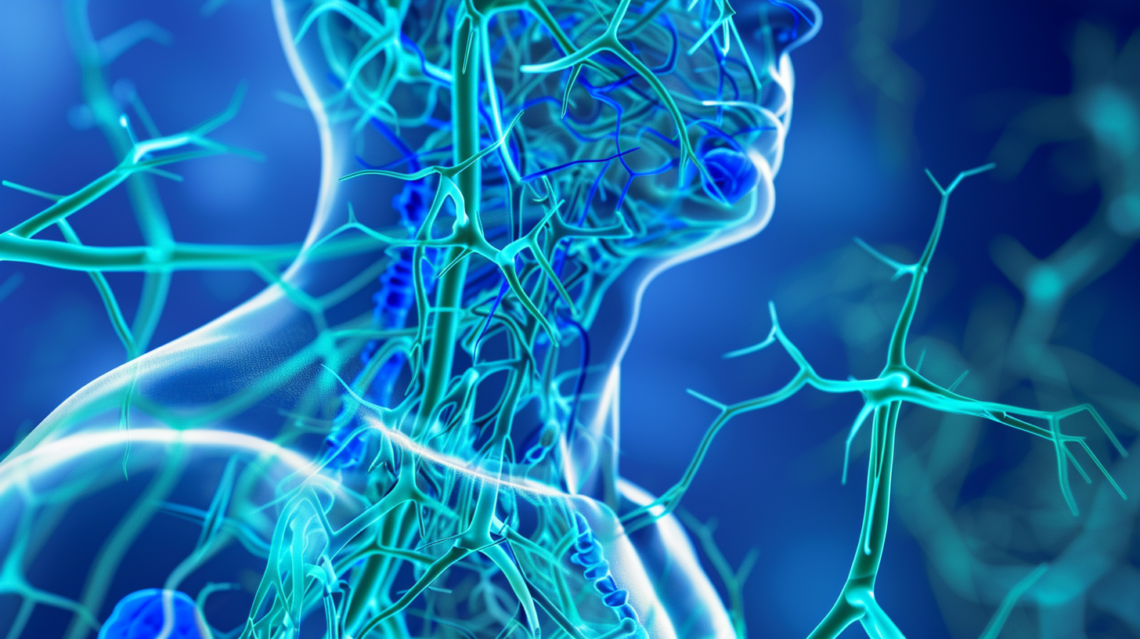Diseases and Disorders
-
Functional Neurological Disorder
Understanding Functional Neurological Disorder (FND) necessitates a journey into the complexities of how our bodies and brains communicate. This condition, intricate in its nature, affects the nervous system’s functionality, specifically in how the brain and body send and receive signals. In essence, something goes awry in this communication network, leading to a plethora of symptoms that defy easy categorization under known diseases. FND is multifactorial, meaning it can be sparked by a variety of risk factors, both physical and psychological. These contributing elements can intertwine in a manner that makes it challenging to pinpoint a single cause. The resulting symptoms are undeniably real and can significantly impact an individual’s quality…
-
Managing Spring Asthma
As the first buds of spring begin to appear, many Canadians find themselves looking forward to spending more time outdoors, enjoying the warmer weather. However, for individuals with asthma, the changing seasons can bring about a set of challenges that can affect their ability to enjoy this time of year fully. Spring asthma, as it is commonly referred to, is a condition where asthma symptoms become more pronounced or worsen due to a variety of seasonal triggers. These triggers include pollen from trees, grasses, and flowers, which are abundant in the spring months, as well as changes in temperature and air quality that can accompany the shift from winter to…
-
Understanding Autism’s Diversity
Autism Spectrum Disorder (ASD) is characterized by a spectrum of conditions that manifest in varied challenges with social skills, repetitive behaviours, speech, and nonverbal communication, autism’s prevalence is notably significant, with the Centers for Disease Control (CDC) estimating its impact on approximately 1 in 36 children and 1 in 45 adults in the United States. This statistical representation underscores the pervasive nature of ASD, highlighting its indiscriminate presence across demographic boundaries of sex, age, race, or ethnicity. Yet, beneath these numbers lies a profound diversity in the lived experiences of autistic individuals, each presenting a unique constellation of strengths and challenges. This diversity is not only a hallmark of autism…
-
Epilepsy Awareness
In a vibrant display of solidarity and understanding, March 26th emerges as a significant day across the globe, when individuals don purple attire, accessories, and even light landmarks in shades of lavender to shine a light on epilepsy. This concerted effort aims not only to raise awareness about epilepsy but also to foster a supportive community for those affected by this neurological condition. In Canada, a staggering 300,000 individuals live with epilepsy, contributing to the worldwide estimate of 50 million people grappling with this seizure disorder. The act of wearing purple, a colour historically associated with solitude and nobility, symbolizes the collective acknowledgment of the challenges faced by those living…
-
Tuberculosis Awareness
Tuberculosis, often abbreviated as TB, stands as a significant infectious disease predominantly affecting the lungs, although it possesses the capability to influence other parts of the body as well. This condition is engendered by the bacterium Mycobacterium tuberculosis, and its mode of transmission is primarily airborne, which underscores the ease with which it can spread from one individual to another. Specifically, when a person who harbours active TB engages in activities such as coughing, sneezing, or speaking, they inadvertently release these bacteria into the air, creating a potential risk for others who might inhale these contaminated air particles, thus facilitating the transmission of the disease. The array of symptoms associated…
-
Lymphedema
Lymphedema stands as a significant health concern, characterized by the swelling that results from the accumulation of lymphatic fluid in the body’s tissues—a manifestation of the lymphatic system’s failure to adequately drain this fluid. This system, essential to both the immune and circulatory systems, functions not only to transport lymph, a fluid replete with white blood cells and waste products, back to the bloodstream but also plays a pivotal role in defending the body against infections and diseases. When the lymphatic system is compromised—whether through damage or malformation—lymph fluid builds up, leading to the swelling indicative of lymphedema. Predominantly affecting the limbs, although it can also occur in the chest,…
-
Rare Disease Spotlight: Duchenne Muscular Dystrophy
Duchenne Muscular Dystrophy (DMD) is a severe disorder that leads to progressive muscle weakness and atrophy, primarily affecting skeletal muscles used for movement and the cardiac muscle. This condition is a form of muscular dystrophy, a group of genetic diseases that weaken the musculoskeletal system and hamper locomotion. DMD is distinguished by its early onset, usually in childhood, and its rapid progression compared to other forms of muscular dystrophy. The Genetic Basis of DMD At the core of Duchenne Muscular Dystrophy is a genetic anomaly on the X chromosome affecting the dystrophin gene, which is crucial for maintaining muscle cell integrity. Dystrophin is a protein that acts as a shock…
-
Rare Disease Spotlight: Ehlers-Danlos Syndrome (EDS)
Ehlers-Danlos syndromes (EDS) represent a multifaceted collection of inherited connective tissue disorders, fundamentally characterized by anomalies in the structure, production, and processing of collagen. This protein’s pivotal role in providing strength and elasticity to skin, ligaments, and blood vessels makes its disturbance a source of considerable medical concern. The resultant spectrum of clinical manifestations is broad, encompassing skin hyperextensibility, joint hypermobility, and tissue fragility, which can affect various organ systems to varying degrees of severity. Patients with Ehlers-Danlos syndrome frequently experience issues with their hand and wrist joints. Typical clinical features involve skin that is soft, smooth, and slightly hyperextensible, accompanied by a tendency to bruise easily yet heal normally.…
-
Rare Disease Spotlight: Sarcoidosis
Sarcoidosis represents a complex and multifaceted condition that manifests through the formation of granulomas, which are small clusters of inflammatory cells, within various organs throughout the body. This disease is characterized by its unpredictability in terms of organ involvement, severity, and the course it takes, varying greatly from individual to individual. At its core, sarcoidosis is an immune response gone awry, with the body’s immune system mistakenly attacking its own tissues and organs, leading to the formation of these granulomas. While these can develop in any organ, they predominantly affect the lungs, lymph nodes, eyes, and skin, but can also impact the liver, heart, and brain, albeit less commonly. The…
-
Navigating the Challenges of Rare Diseases
Across the globe, an estimated 300 million individuals grapple with the complexities of living with a rare disease. This figure, which accounts for approximately 3.5 to 5.6 percent of the worldwide population, sheds light on a significant yet often overlooked segment of our society. Rare Disease Day, observed today on February 29th, serves as a pivotal moment to amplify awareness and mobilize support for those affected by these uncommon conditions. The majority of rare diseases, with over 72 percent being genetically rooted, present a spectrum of challenges that underscore the urgency for enhanced research, diagnostic processes, and access to care. One of the most formidable obstacles faced by individuals with…









